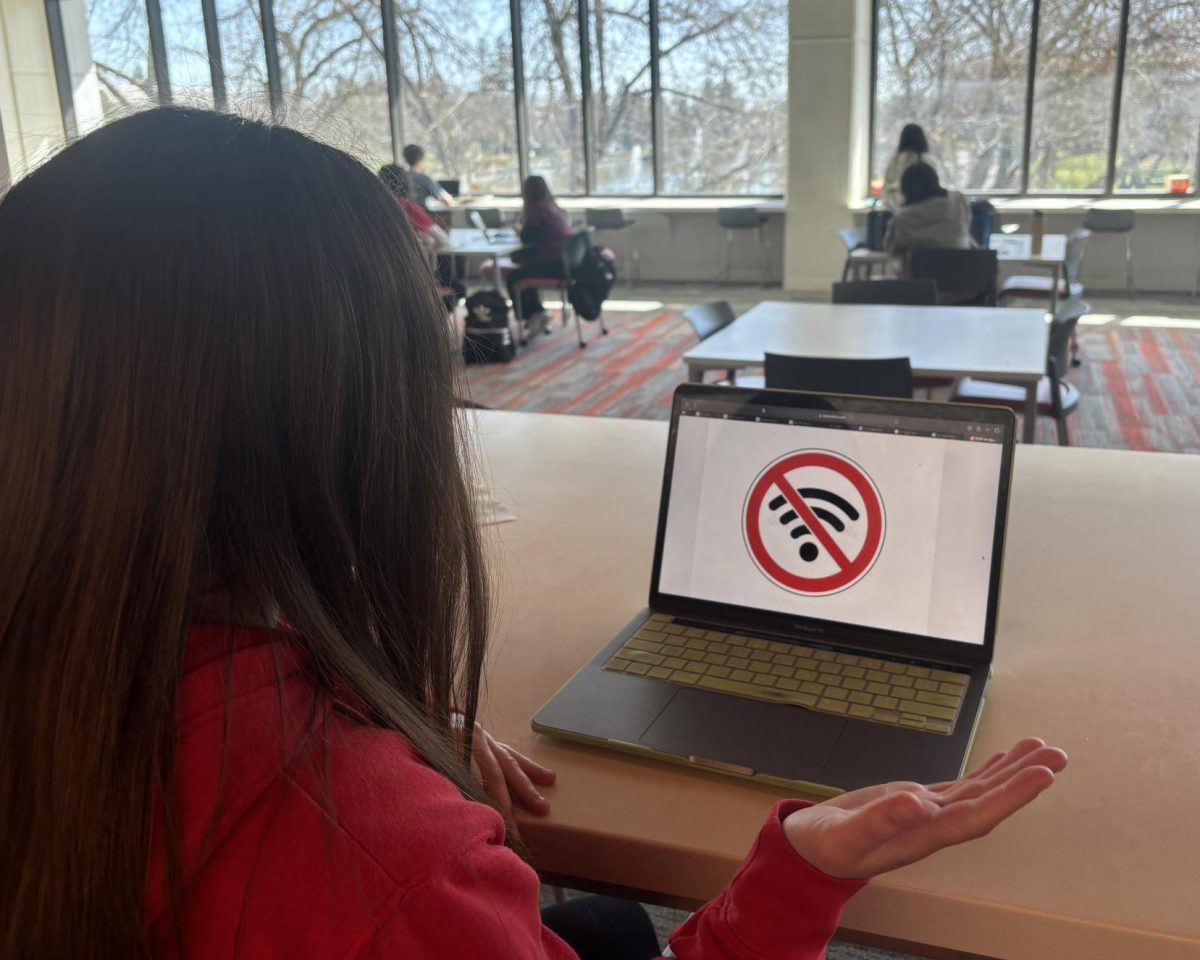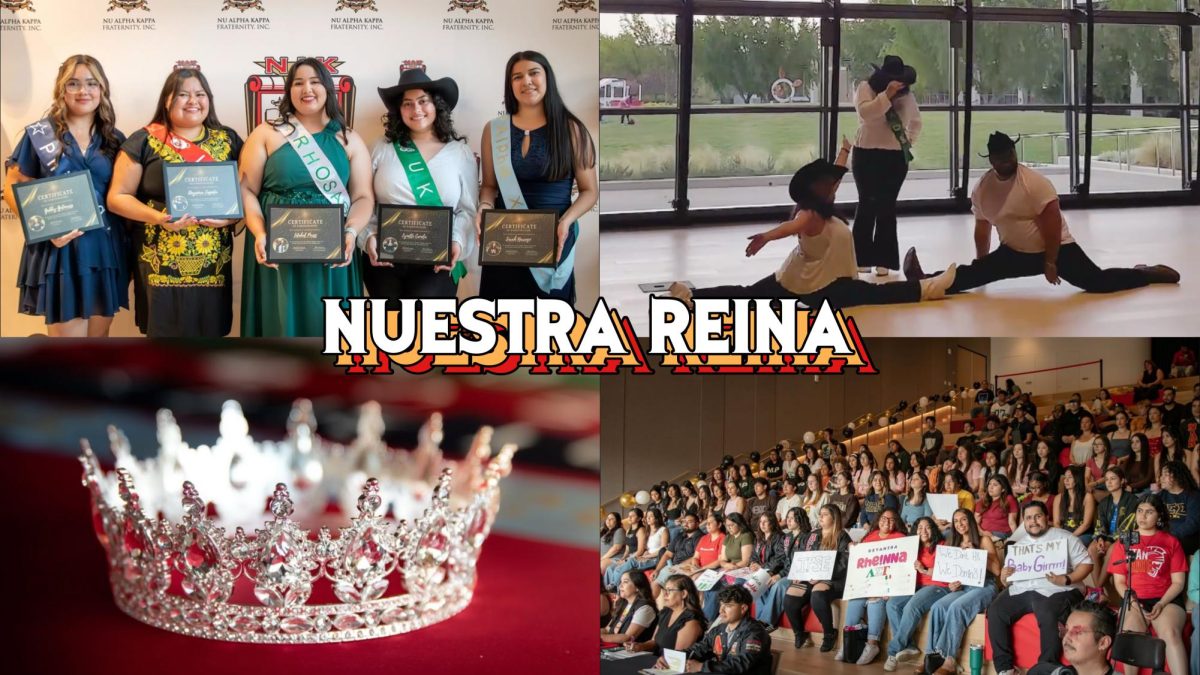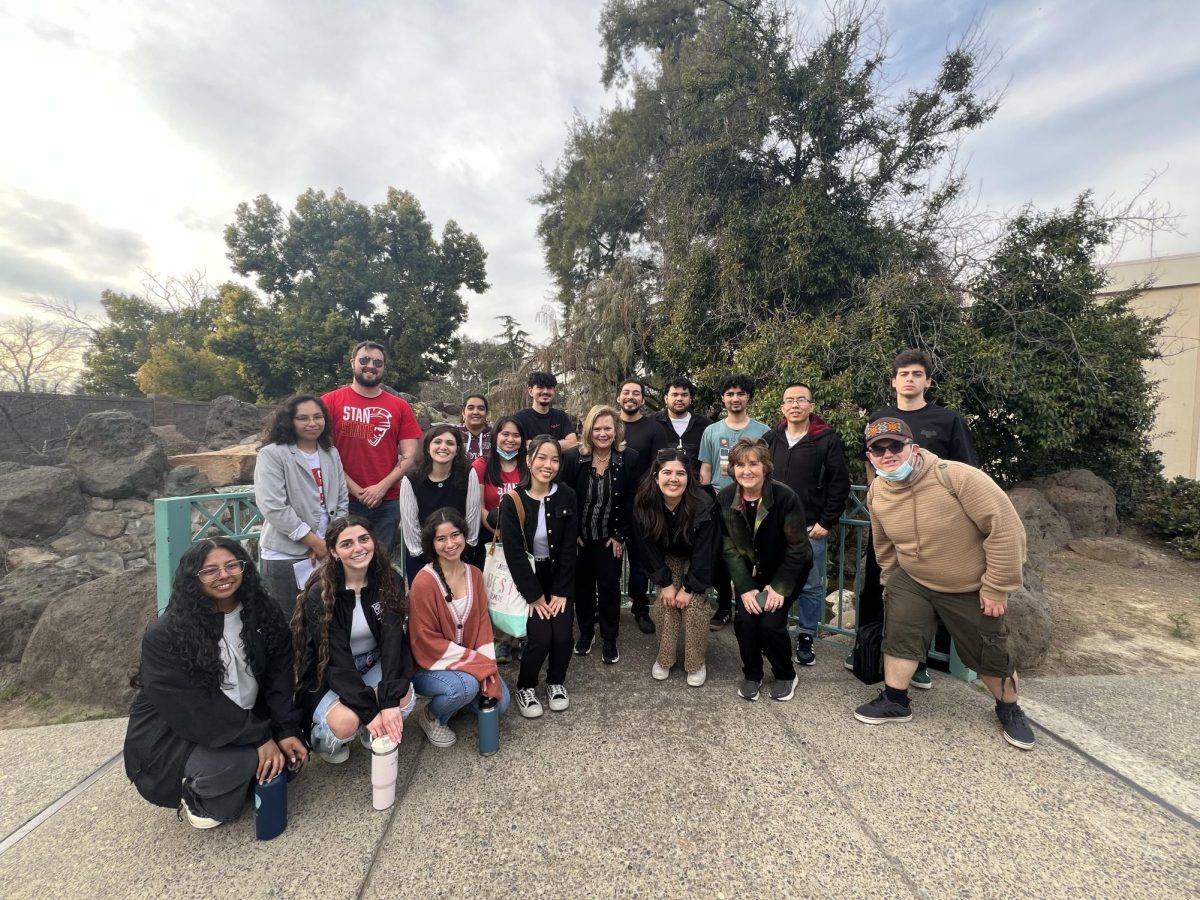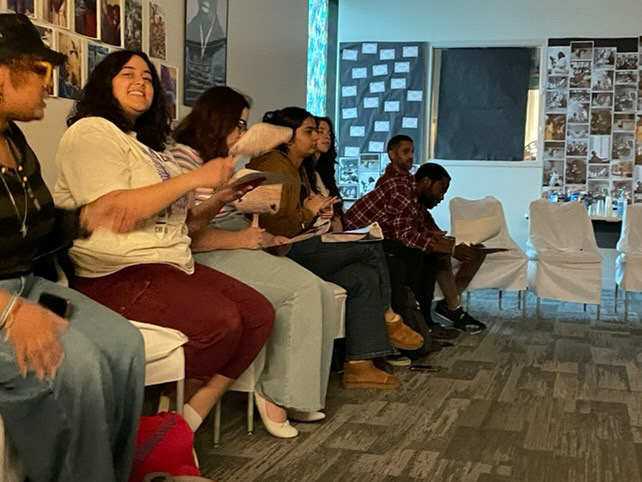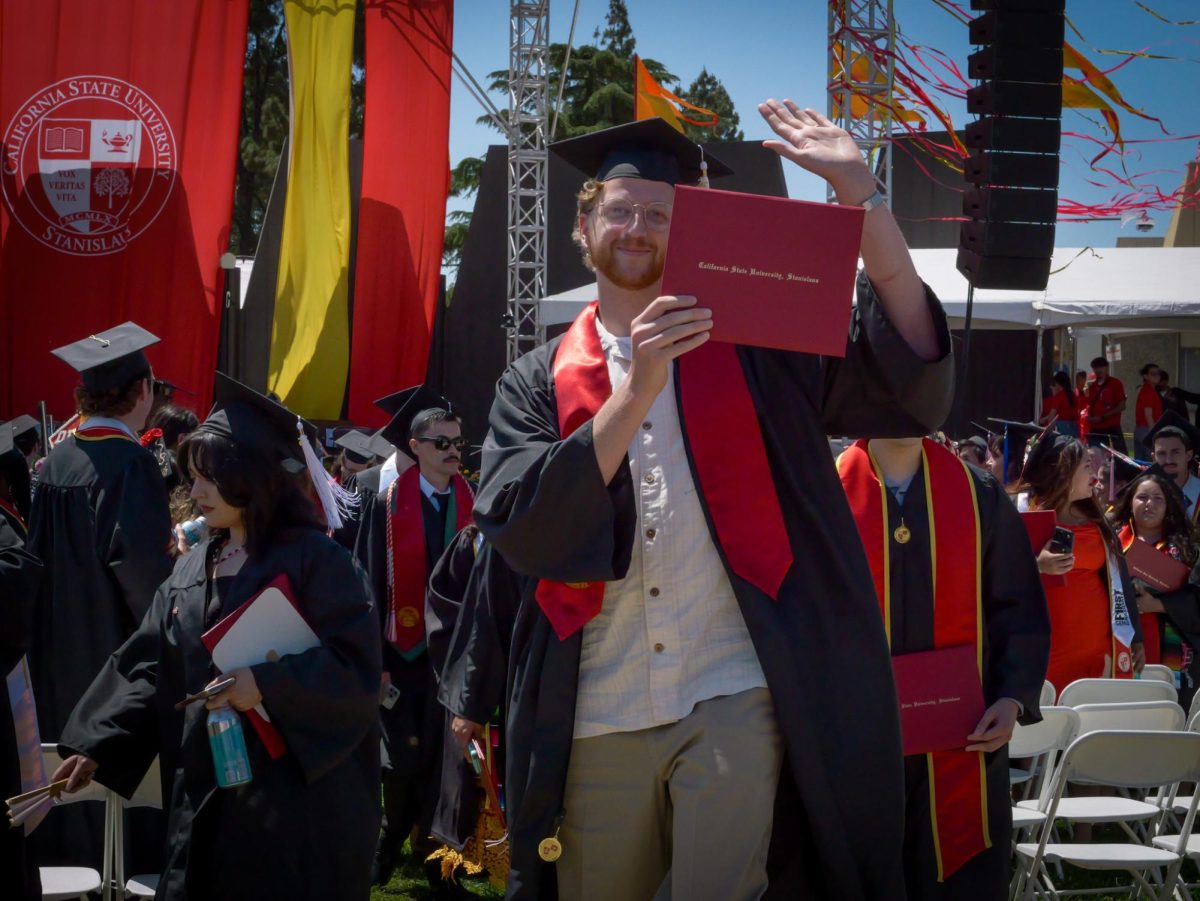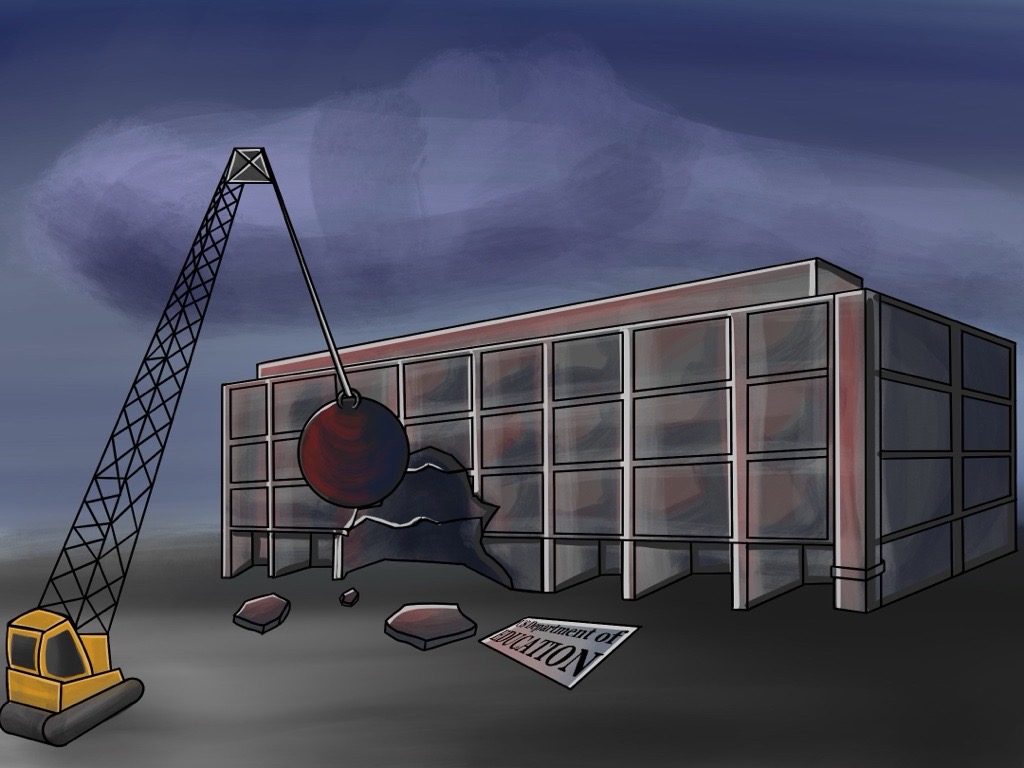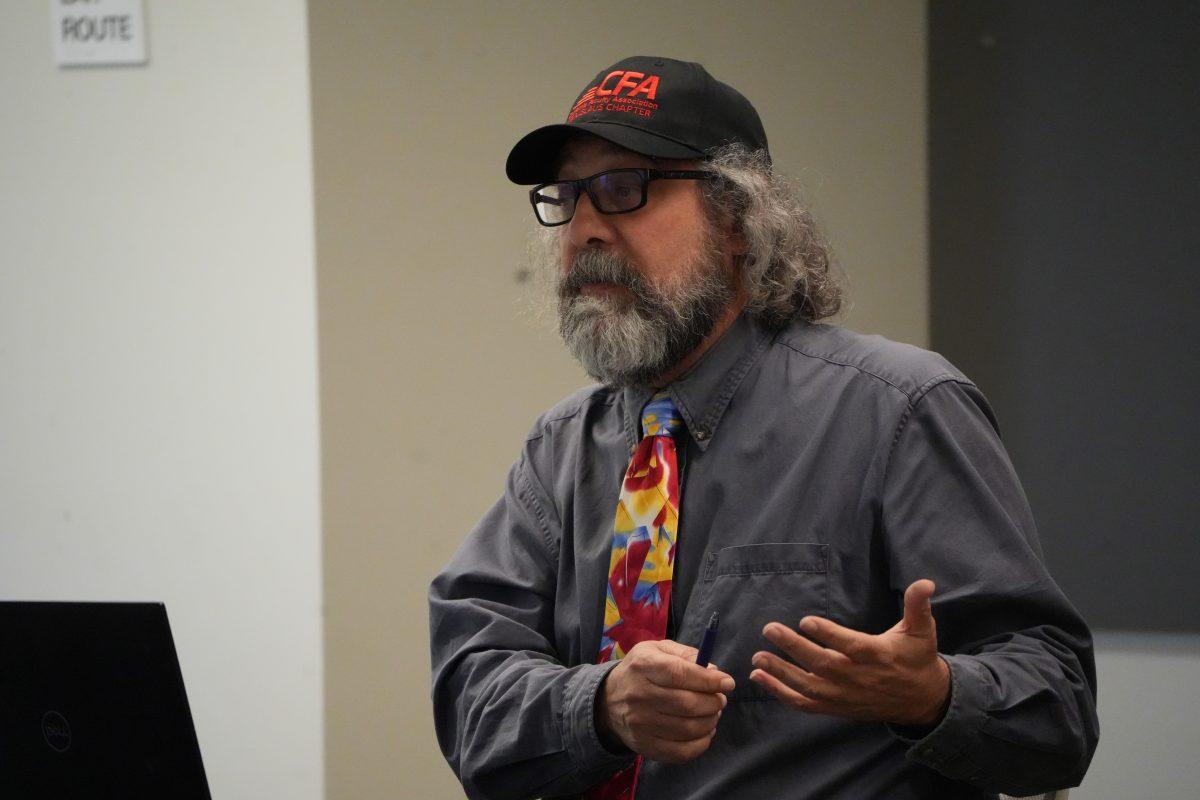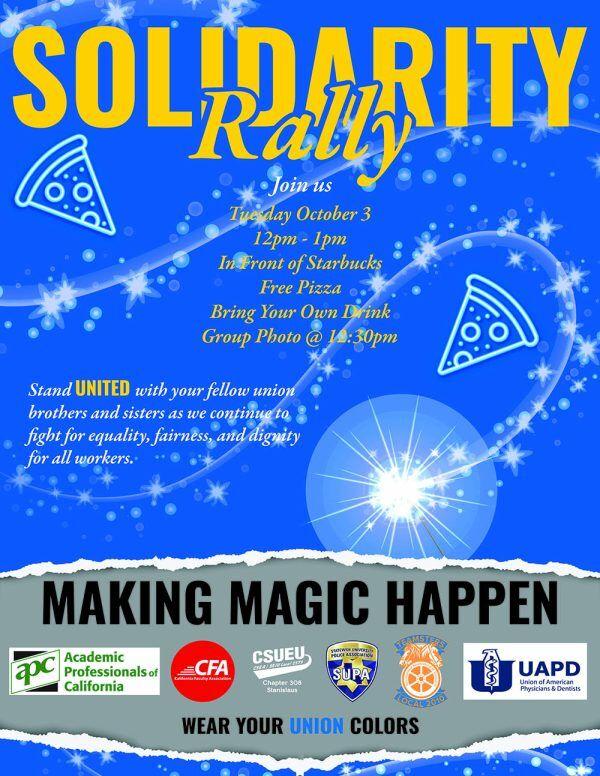It’s that time of the year again.
Halloween decorations are on sale, Christmas lights are adorning houses way too early and inspired writers are pent up in their houses with eyes glued to their laptops and lips supping at yet another powerful cup of caffeine.
With that said, November is National Novel Writing Month (more commonly known as NaNoWriMo) where the goal is to write 50,000 words on the NaNoWriMo website by November 30.
This year several students from California State University, Stanislaus, (Stan State), are partaking in this challenging endeavor.
“I’ve participated in the challenge three times,” Dylan Driver (senior, English), who has been writing for NaNoWriMo for six years, said.
Although NaNoWriMo is a popular event in which hundreds of thousands of writers participate, NaNoWriMo is actually younger than most Stan State students.
“This is my 18th year sailing out on the beautiful, ridiculous adventure of #NaNoWriMo. I still feel as giddy and seasick as I did in 1999,” NaNoWriMo founder, Chris Baty, said on Twitter on October 31.
The very first NaNoWriMo took place in July 1999 in the San Francisco Bay Area and consisted of 21 aspiring novelists.
“We wanted to write novels for the same dumb reasons twenty-somethings start bands. Because we wanted to make noise,” Baty said on the history page of the NaNoWriMo website.
NaNoWriMo has come a long way since 1999.
“NaNoWriMo 2013 counted 310,000 adult novelists, plus an additional 89,500 young writers. There were 651 Municipal Liaisons in 595 regions, 650 Come Write In libraries and bookstores, and 2,000 YWP classrooms,” Chris Angotti, the Director of Programs for 2013 wrote on their website.
This year, NaNoWriMo has set a new donation goal on their website – 1.4 million dollars. In 2015, the donations went to NaNoWriMo programs to assist 351,489 participant novelists, 926 volunteers throughout six continents, 80,137 young writers program participants, and 1,012 partner libraries and community centers.
The Municipal Liaison for the Modesto region is twenty years old and has been doing NaNoWriMo for five years. Her name is Jessica Hilbert, but she prefers to go by “Jess.” On the NaNoWriMo website, she is known as RealistSparrow.
“I do NaNo because it is a great environment for other writers to come and socialize with ‘our kind,’ get to know each other, and offer moral support for the journey that is writing 50,000 words in a month,” Hilbert said.
The regional NaNoWriMo kick-off party took place on October 30 at the Denny’s on McHenry Avenue in Modesto. There, one could find Hilbert as well as fellow NaNo writers Kayden Murrison and Joe Elliot, sitting at a table by the entrance with a NaNoWriMo sign sticking out of an Iron Man cup.
The first assignment that Hilbert gave the writers was to fill out a small sheet of paper that asked for the writers’ names and pen names as well as details about their stories such as the genre, main character, and start, middle, and end points of the novel.
Hilbert explained the points as being significant parts of the plotline that are similar to a novel’s climax but can be found at the beginning, middle, and end to keep the attention of the reader.
“Meeting people, getting to know other writers, seeing what they’re doing, helping me staying focused on what I’m supposed to be doing – on my writing – and just having fun,” said Elliot about his favorite part of NaNoWriMo.
The NaNoWriMo website also offers genre-categorized forums and encourages participants to talk to others about their writing journey and make “Writing Buddies.”
“I made a Writer Buddy last year and we still talk to this day about writing and reading. They’re really helpful, giving good advice and encouraging each other to keep writing,” Driver said.
Sarah Stevenson, a local novelist and part-time teacher at MJC, has written two published novels that originated as NaNoWriMo manuscripts, The Latte Rebellion and Underneath. Reviews of both books can be found in Stan State’s library databases.
“I love being able to connect with friends and fellow writers who might be participating; it creates a sense of community effort in doing this crazy, bold thing together,” Stevenson said.
Some Stan State students have decided to set up personal goals with smaller word counts, and others have chosen not to participate at all due to school obligations.
“I tried to do it November 2014, but I couldn’t because of school. This year I don’t think I’m going to because of school again, but maybe I’ll still try to write a short story or something so I’m not missing out entirely on it,” Juan Ruiz-Olguin (sophomore, Psychology) said, who plans on switching his major to English in the hopes of becoming a better writer.
“I wouldn’t suggest doing it when you’re just starting college, for one, because it is a big commitment. If you are trying to juggle NaNoWriMo with a life that is already pretty booked, you’re not going to get much done,” Hilbert said when asked what advice she would give to students who are thinking about participating in NaNoWriMo.
“I will literally spend half of my day trying to write because I have no time to do anything else during NaNo,” Murrison said, whose highest word count was 25,000.
This advice does not only apply to students according to the professionals.
“Whether you’re a student or not, I think it totally depends on whether you’re good at time management,” Stevenson said.
“You have to be honest with yourself about that. At the same time, I don’t think there’s anything wrong with participating and not worrying about reaching 50,000, and just using it as an opportunity to join in the communal effort and fun, and producing more writing than you otherwise would.”
According to the NaNoWriMo website, out of the 351,489 participants in 2015, only 40,426 reached the 50,000-word goal. Even though only about an eighth of the aspiring novelists reached the goal, 90 percent of participants said NaNoWriMo made writing more fun for them, and 87 percent said that it helped them learn what they could accomplish when they are determined.
“Writing in NaNoWriMo is something I think every student should try at least once,” Driver said, who also shared his favorite quote from author Shannon Hale.
“I’m writing a first draft and reminding myself that I’m simply shoveling sand into a box so that later I can build castles.”
Dr. Chris Nagel, a philosophy professor at Stan State and NaNo participant since 2011, said that he does not take NaNoWriMo too seriously and that his best strategy is that he writes under a more creative alter ego.
“Anybody who wants to participate should treat it like the lark that it is. The alter ego business and not being serious are two ways I try to set aside my ego and ego defenses, which stop me from being creative.”
His strategy seems to be working since he has reached the 50,000-word goal three times. Unlike those who say that they need a clear schedule for writing, Dr. Nagel said that he writes “all the time.”
“It’s hard to not write. But most of my writing is philosophy, or stuff related to teaching. When I write, I write very quickly, and it is not difficult to find words. When it’s slow or difficult to find words, I stop. That’s a strategy as well, I suppose.”
“My suggestion is to not worry so much about grammar, just write. A book/manuscript can be edited later,” Gina Meyers, a cookbook author and owner of a publishing, promotions, and marketing firm called Serendipity Media Group, said.
“Even if you only get 20k, even if you only get 5,000 words, then I still think that that is a great accomplishment, and you should pat yourself on the back for that,” said Hilbert.
One can start participating in NaNoWriMo by signing up on their website, and the sign-up is free. The home region page also has a schedule of the local write-ins for Turlock and Modesto.
Categories:
Rejoicing in National Novel Writing Month
0
Donate to Signal
Your donation will support the student journalists of California State University, Stanislaus. Your contribution will allow us to purchase equipment and cover our annual website hosting costs.
More to Discover




